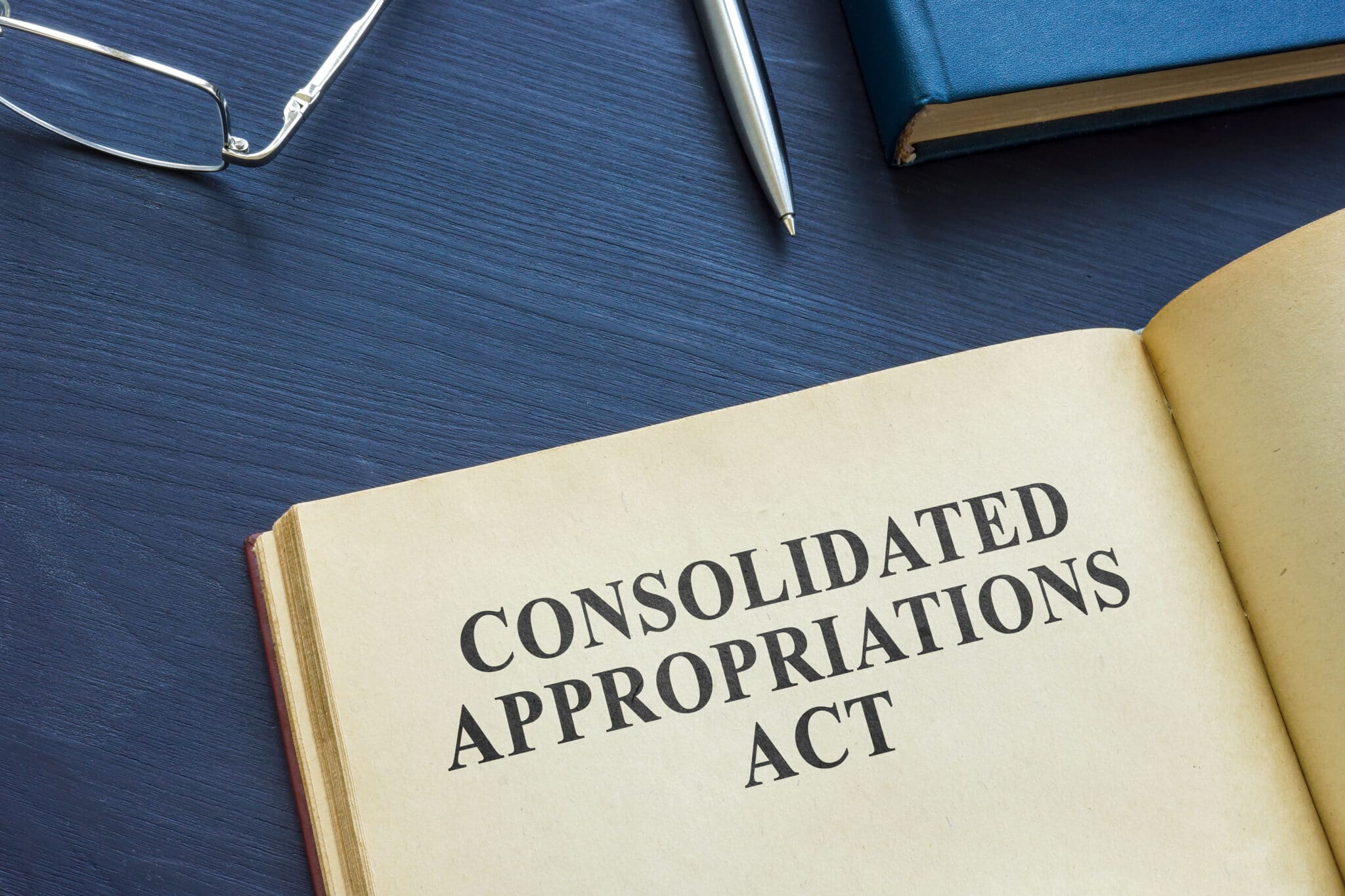January 29, 2021
MEMORANDUM
TO: Clients of Thomas, Fisher & Edwards, P.A.
RE: Consolidated Appropriations Act, 2021 (Second COVID Relief Legislation)
On December 27, 2020, President Trump signed the Consolidated Appropriations Act, 2021 (the “Act”)—reportedly the longest bill ever passed by Congress—into law. The Act notably contained the Coronavirus Response and Relief Supplemental Appropriations Act, 2021 and other provisions designed to provide economic relief to those affected by the COVID-19 pandemic. Thus, the Act is the second legislative act which was passed last year to address the ongoing COVID-19 pandemic, following the Coronavirus Aid, Relief, and Economic Security Act (the “CARES Act”), which was passed in April 2020.
While the most publicized aspect of the Act may be its provision for payments of up to $600 to qualifying individuals (and additional $600 payments to such individuals for their dependents under age 17), there are several other aspects of the Act that you should be aware of. We hope that this memorandum serves as a resource to you regarding the programs and aid available to individuals and businesses during this unprecedented time. Not all aspects of the Act are addressed in this memorandum. However, we have focused on select provisions of the Act which we felt may be of importance to you, our client. After careful review of this memorandum, please let us know if you would like to further discuss with one of our attorneys.
Select provisions of the Act include the following:
- The Act allows for a second loan from the Paycheck Protection Program (“Second PPP Loan”) in some circumstances. Eligible recipients of a Second PPP Loan generally include those businesses which (a) employ no more than 300 employees, (b) have used or will use the full amount of their first loan from the Paycheck Protection Program (“First PPP Loan”), and (c) demonstrate at least a 25% reduction in gross receipts in either the first, second, third or fourth quarter of 2020 as compared to the same quarter in 2019. Generally, recipients of a Second PPP Loan may borrow up to 250% of their average monthly payroll costs in the one year prior to the date of the Second PPP Loan or the prior calendar year. No loan may exceed $2 million. Certain businesses in the accommodation or food services industries (e.g., hotels and restaurants) may be eligible for a Second PPP Loan of up to 350% of such average monthly payroll costs.
- The Act also allows for existing borrowers under the Paycheck Protection Program (“PPP”) to request an increased loan amount if their current PPP loan has not been forgiven.
- The eligible expenses for which a First PPP Loan or Second PPP Loan may be used continue to include payroll costs, mortgage interest, rent, and utilities expenses, as provided in the CARES Act. However, the Act adds additional eligible expenses such as (a) operational expenditures (e.g., costs of software, cloud computing and other human resources or accounting needs), (b) property damage costs related to public disturbances in 2020 which were not covered by insurance, (c) supplier costs owed pursuant to a contract in existence prior to taking out the loan, and (d) personal protective equipment (“PPE”) and other investments needed for a borrower to comply with health and safety guidelines. As with the First PPP Loan, at least 60% of the amount borrowed pursuant to the Second PPP Loan must be allocated to payroll costs for full forgiveness to be attainable. As a reminder, payroll costs include (i) salaries and other compensation, (ii) health insurance premiums, (iii) retirement benefits, (iv) vacation, parental, family, and sick pay, and (v) state and local taxes. Payroll costs do not include federal tax withholdings, unemployment taxes, compensation to any individual with a primary place of residence outside of the United States, or compensation to an individual in excess of $100,000 annually.
- The Act clarifies that the amount of a First PPP Loan or Second PPP Loan that is forgiven is not included in the borrower’s gross income for federal income tax purposes. Further, the Act clarifies that any federal income tax deductions which would otherwise be allowed for any expenses paid with the proceeds of a First PPP Loan or Second PPP Loan that is forgiven will be allowed as deductions. In other words, not only do the proceeds of the loan allow for the borrower to pay its employees, but any of such proceeds which are actually used to pay employees (or otherwise used for deductible expenses) are tax deductible—even if the full amount of the loan is eventually forgiven.
- The Act extends the repayment deadline through December 31, 2021 for any payroll taxes which were deferred pursuant to the Presidential Memorandum issued by President Trump in August 2020.
- The Act expands the eligibility for the employee retention tax credit, which was initially introduced as part of the CARES Act, to include employers with PPP loans. The Act also increased the amount of tax credit available. Eligible employers include those (a) whose business has been “fully or partially suspended” due to government order, or (b) who experienced a significant decline in gross receipts (i.e., a decline of at least 20% during a calendar quarter in 2021 as compared to the same calendar quarter in 2019). The amount of tax credit available is 70% of “qualified wages” per employee for wages paid through June 30, 2021, up to $10,000 in wages per employee (i.e., up to $7,000 per employee). Eligibility for the employee retention tax credit may be subject to other limitations.
- The Act clarifies that PPE purchases paid or incurred after March 12, 2020 qualify for the educator expense tax deduction.
- The Act sets aside $15 billion for the Small Business Administration to make grants to eligible live venue operators or promoters, theatrical producers, live performing arts organization operators, museum operators, motion picture theatre operators, or talent representatives who demonstrate a 25% reduction in revenues. In the initial 14 days following the implementation of this program, only those persons or entities with at least 90% reductions will be eligible for these grants, and for the following 14 days, only those persons or entities with at least 70% reductions will be eligible. The grants are to be used for specified expenses such as payroll costs, rent, utilities, and PPE.
- The Act expands Pandemic Unemployment Assistance through March 14, 2021 and allows individuals receiving such benefits as of March 14, 2021 to continue receiving such benefits through April 5, 2021. The maximum number of weeks of benefits an individual may claim is raised from 39 to 50.
- The Act extended a provision in the CARES Act which covered 50% of the costs of unemployment benefits for employees of state and local governments and non-profit organizations.
- The Act requires each state to set guidelines regarding how situations are handled when a claimant of unemployment compensation refuses to return to or accept an offer of suitable work without good cause.
Thomas, Fisher & Edwards, P.A. is committed to providing quality legal services throughout this challenging time, while also keeping the health of both its employees and clients in mind. If you have any questions regarding the Act please contact our office to set up a phone or video conference.



